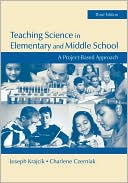Category Books
- Fiction Books & Literature
- Graphic Novels
- Horror
- Mystery & Crime
- Poetry
- Romance Books
- Science Fiction & Fantasy
- Thrillers
- Westerns
- Ages 0-2
- Ages 3-5
- Ages 6-8
- Ages 9-12
- Teens
- Children's Books
- African Americans
- Antiques & Collectibles
- Art, Architecture & Photography
- Bibles & Bible Studies
- Biography
- Business Books
- Christianity
- Computer Books & Technology Books
- Cookbooks, Food & Wine
- Crafts & Hobbies Books
- Education & Teaching
- Engineering
- Entertainment
- Foreign Languages
- Game Books
- Gay & Lesbian
- Health Books, Diet & Fitness Books
- History
- Home & Garden
- Humor Books
- Judaism & Judaica
- Law
- Medical Books
- New Age & Spirituality
- Nonfiction
- Parenting & Family
- Pets
- Philosophy
- Political Books & Current Events Books
- Psychology & Psychotherapy
- Reference
- Religion Books
- Science & Nature
- Self Improvement
- Sex & Relationships
- Social Sciences
- Sports & Adventure
- Study Guides & Test Prep
- Travel
- True Crime
- Weddings
- Women's Studies
Teaching Science in Elementary and Middle School: A Project-Based Approach » (3rd Edition)

Authors: Joseph S. Krajcik, Charlene M. Czerniak
ISBN-13: 9780805862065, ISBN-10: 0805862064
Format: Paperback
Publisher: Taylor & Francis, Inc.
Date Published: September 2007
Edition: 3rd Edition
Author Biography: Joseph S. Krajcik
Book Synopsis
The need for a scientifically literate population that can apply scientific ideas to solve real world problems in the 21st century has never been greater. Yet a growing disconnect exists between this need and the educational capacity to prepare them. The mission of Teaching Science in Elementary and Middle School: A Project-Based Approach, 3e is to help answer this need. Like its predecessors, this new edition is organized around the guiding principles of problem-based learning: long-term, interdisciplinary, student-centered lessons that are relevant to real-world issues and activities. This teaching approach engages all young learners—regardless of culture, race, or gender—in exploring important and meaningful questions through a process of investigation and collaboration. Throughout this dynamic process, students ask questions, make predictions, design investigations, collect and analyze data, make products, and share ideas. Changes in this new edition include the following…
- Stronger, more explicit connections between PBS, inquiry teaching and the National Science Education Standards (NSES).
- The theme of establishing the relevance of science to students’ lives has been expanded. It now includes attention to discrepant events, anchoring events, and experiencing phenomena in addition to its previous focus on driving questions.
- To help children understand that science is about explaining phenomena, a new chapter, Making Sense of Data, now follows the one on Designing and Carrying Out Investigations. It contains a section on helping children create evidence-based scientific explanations.
- A new section on the challenges of special needs and gifted students.
- The discussion of technology in science teaching have been expanded to include such new devices as wireless handhelds, cameras, cell phones, wikis and ipods.
- The introductory scenarios have been reworked to insure greater relevance to elementary science teaching.
- An accompanying Web site will offer test items and strategies to support students in problem-solving and in planning and carrying-out investigations.
This text is appropriate for anyone interested in teaching elementary or middle school science using an inquiry-oriented, problem-based framework.
Table of Contents
@contents:
- Why and How Should I Teach Science to Children?
- How Do Children Construct an Understanding of Science?
- How Do I Establish Relevance to Students’ Lives?
- How Do I Support Students in Designing & Carrying Out Investigations?
- How Can I Support Students in Making Sense of Data?
- How Can I Use Learning Technologies to Support Student Inquiry?
- How Do I Develop Collaboration in the Science Classroom?
- What Instructional Strategies Can I Use to Support Student Inquiry?
- Why Do We Assess Students in Science?
- How is Student Understanding Assessed?
- How Do I Manage the Project-Based Science Classroom?
- How Do I for a Project-Based Classroom?
- What are the Next Steps?
Subjects
 Teaching & Teacher Training
Teaching & Teacher Training  Teaching - Science & Technology
Teaching - Science & TechnologyScience & Nature
 Reference & Textbooks
Reference & Textbooks  Study & Teaching of Science
Study & Teaching of ScienceScience & Nature
 All Science & Nature
All Science & Nature  Science - Applied
Science - AppliedScience & Nature
 All Science & Nature
All Science & Nature  Science Reference
Science ReferenceNonfiction
 Science & Nature
Science & Nature  Reference & Textbooks
Reference & TextbooksNonfiction
 Science & Nature
Science & Nature  All Science & Nature
All Science & Nature
